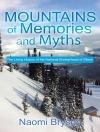In 'The New North, ’ Agnes Deans Cameron offers a vibrant exploration of the Canadian Northwest, characterized by her engaging narrative style that blends personal anecdotes with meticulous observation. Written during the early 20th century, the book captures the spirit of exploration and the allure of the uncharted territories, set against a backdrop of social and climatic transformations. Cameron’s vivid descriptions and rich imagery draw readers into the landscape and culture of the North, while her reflections provide insight into the era’s prevailing attitudes towards Indigenous peoples and the challenges of colonization. Agnes Deans Cameron was a pioneering female journalist and explorer, known for her unyielding adventurous spirit and commitment to documenting the experiences of her gender and society. Her travels in Canada were not merely an escape but a quest to record the profound beauty and complexity of the land she loved. Cameron’s diverse background, which included a challenging upbringing, fueled her determination to break barriers and present the North’s untold stories through a woman’s lens, at a time when such perspectives were often overlooked. Recommended for readers intrigued by exploration narratives and Canadian history, 'The New North’ stands as a testament to both the beauty of the Canadian wilderness and the strength of a woman who dared to tell its story. Cameron’s work invites contemporary readers to reassess their understanding of the North, making it an essential addition to any literary collection.
O autorze
Agnes Deans Cameron (1863–1912) was a notable Canadian author, educator, and adventurer whose work gained significant recognition in the early 20th century. Cameron was born in Victoria, British Columbia, and began her career as a schoolteacher before ascending to the position of the first female school principal in the province. Her passion for education and exploration intersected remarkably in her seminal work, 'The New North: Being Some Account of a Woman’s Journey through Canada to the Arctic’ (1910), which documents her extensive travels through the Canadian wilderness and the Arctic Circle. This narrative, rich in vivid descriptions and social commentary, provides readers with an insight into the life and culture of the Northern territories during that era. Cameron’s writing style is both informative and engaging, weaving together her experiences with the captivating landscapes and the diverse communities she encounters. Her work not only serves as a travelogue but also breaks new ground in bringing the realities of the Canadian North to a broader audience, at a time when such narratives were predominantly penned by men. Today, Cameron is celebrated not only for her literary contributions but also for her pioneering spirit as an intrepid explorer and advocate for education and women’s rights.











